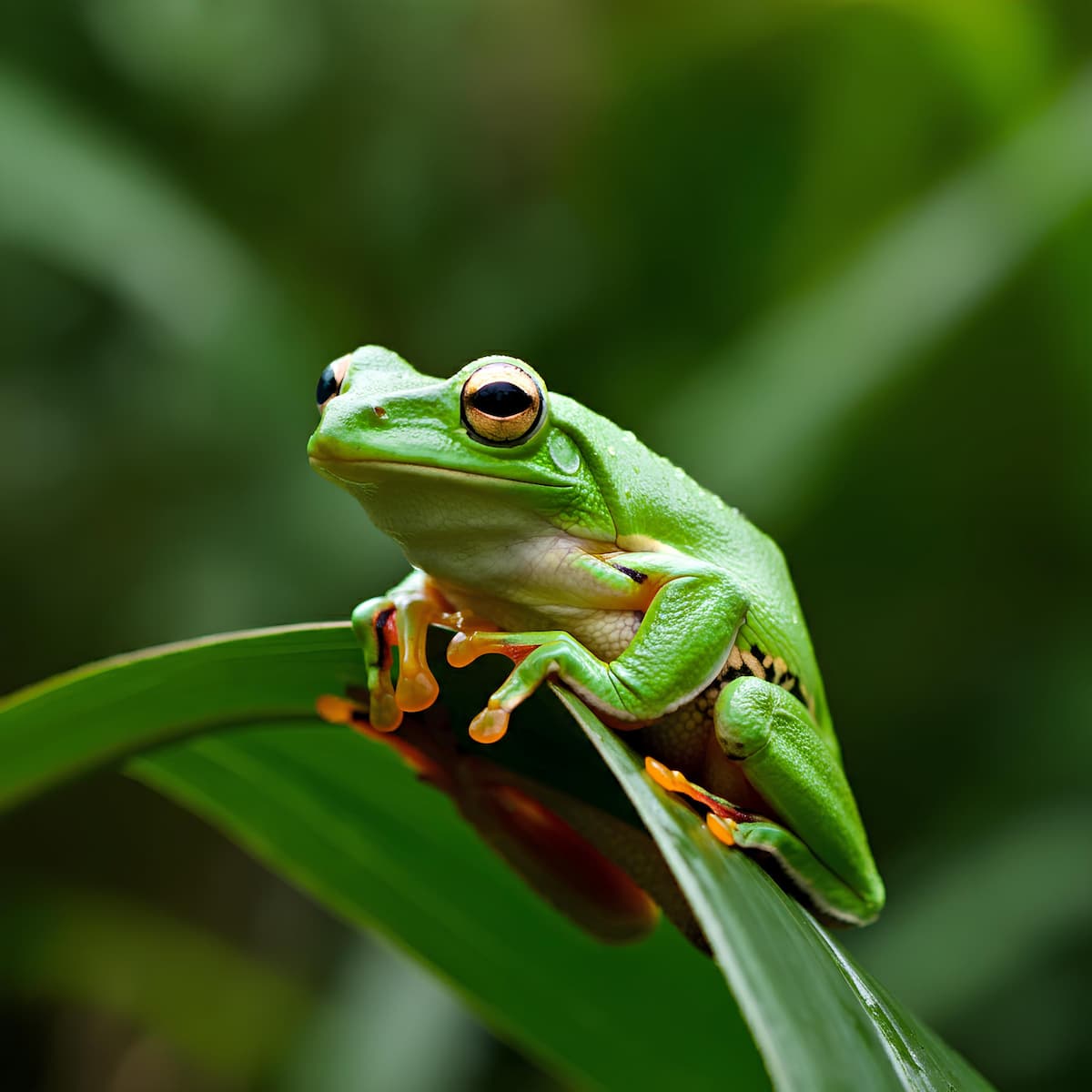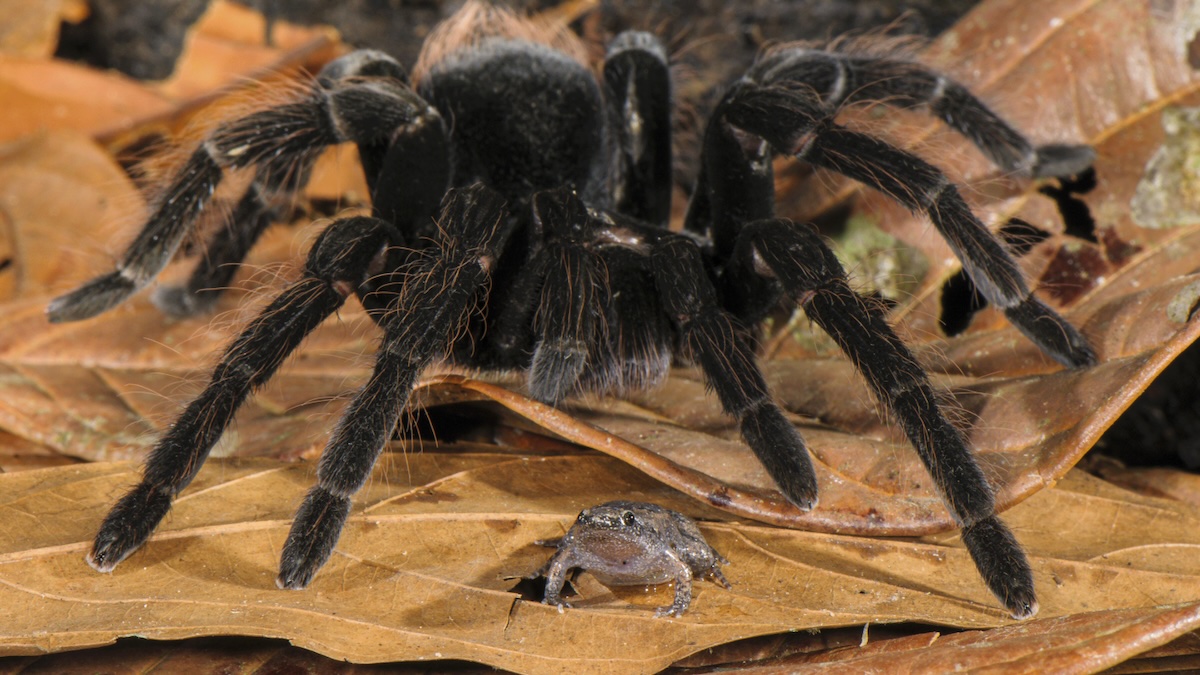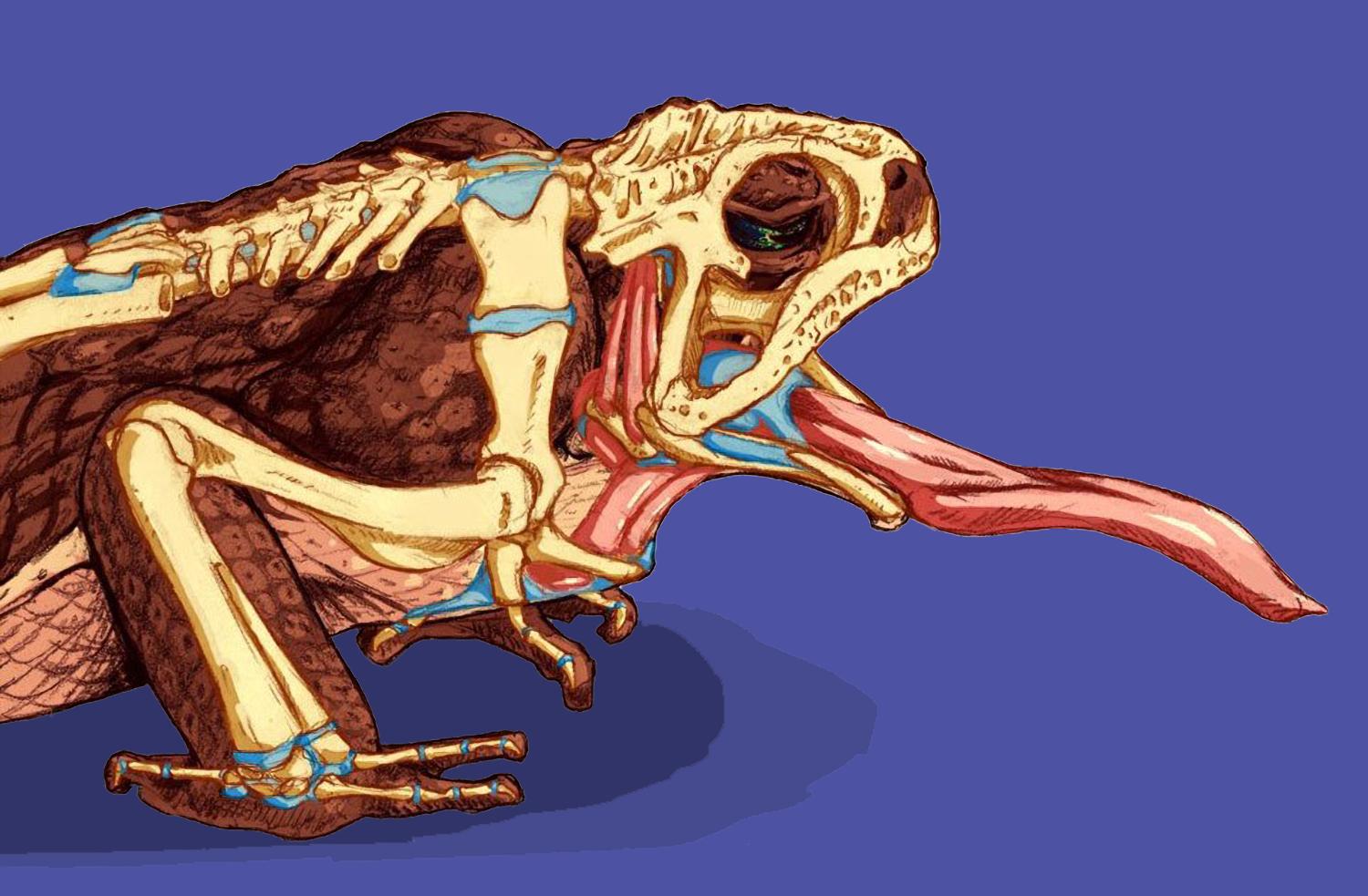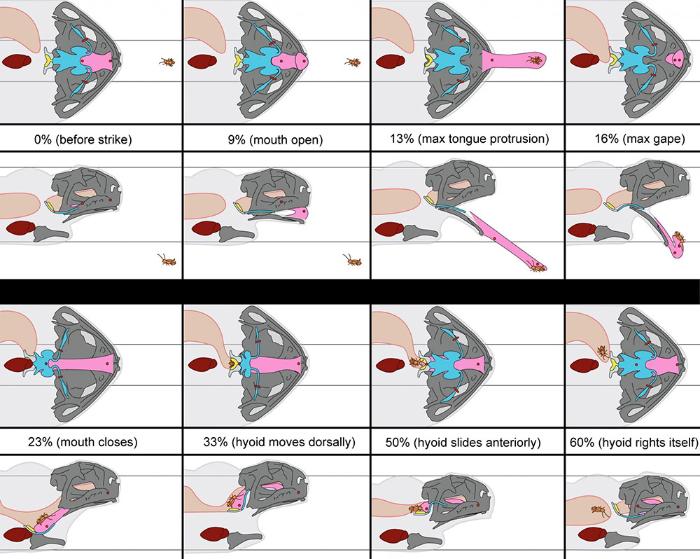Better than their reputation: While tarantulas cause fear and rapid heartbeats in many people, biologists have discovered that they are surprisingly popular in the animal kingdom. According to research, these eight-legged hunters maintain symbiotic relationships with a variety of other animals — especially toads and frogs, but possibly also with other spiders and even snakes, termites, and ants. Interestingly, these relationships of tarantulas could also explain why they are so hairy.
Fear of spiders is one of the most commonly cited phobias. Encountering a tarantula (Theraphosidae) with its ten-centimeter-large, hairy body in real life would probably be an absolute nightmare for many people. However, these eight-legged hunters pose no real danger unless you’re a cockroach or grasshopper. Tarantulas are also not averse to small mammals and snakes if they manage to overpower them.
Friendly Spider Seeks Croaking Roommate
But tarantulas don’t just spread fear and terror in the animal kingdom. There are repeated reports of cases where these eight-legged creatures form close relationships and even symbioses with animals of other species, such as frogs and toads, even sharing their burrows with them. Alireza Zamani from the University of Turku in Finland and his team have now investigated how widespread such phenomena are. As part of a comprehensive literature review, they collected all known observations of tarantula symbioses and analyzed them in a review paper.
The results showed that symbioses with frogs and toads alone, which are collectively known as anurans, have been observed 83 times in tarantulas across 17 countries. “Most of these observations describe the presence of more than one anuran individual either at the entrance or within an occupied terrestrial burrow of a tarantula,” report Zamani and his colleagues. The frogs and toads apparently lived there together with the spider and were not attacked by it.
Win-win in the Shared Living Space
“Obviously, the frogs and toads living in the tarantulas’ shelters benefit from protection against their predators,” explains Zamani. In an experiment from 1980, a tarantula even protected its amphibian roommates from a dangerous snake. But what does the spider gain from this arrangement?
The frogs and toads that the spider allows to live with it feed on insects. These insects, in turn, can be dangerous to the eight-legged hunter itself, but especially to its eggs and young, as the researchers explain. “Anurans offer protection particularly against parasitic flies and predatory ants,” the team writes. Thus, both sides and their offspring benefit equally from this unusual shared living arrangement.
Diverse Roommates
But tarantulas don’t just open their doors to amphibians. As Zamani and his colleagues have discovered, there are also 14 known cases where they shared their burrow with smaller spiders such as harvestmen and whip spiders. However, it’s still unclear to what extent the roommates benefit in each case. The same applies to three cases where a snake was observed in the spider’s burrow without any attacks occurring.
In some places, termites and dangerous army ants also come and go in the tarantulas’ burrows. These are actually known for attacking and eating a variety of arthropods. However, they usually spare the tarantulas and their young, as the collected observations suggest. They probably only help themselves to the remains of the eight-legged creatures’ last meals in the burrow and, as a side effect, give it a thorough “cleaning”, which also benefits the spider.
Mystery of Spider Hairs Solved
The cleaning crews in the spider’s burrow are not completely harmless, though. Individual ants occasionally attack the spider itself, despite the abundance of food remains, but they never get far, as Zamani explains: “The dense hair covering the tarantula’s body makes it difficult for ants to bite or sting the spider. Therefore, we believe that the hairiness might have evolved as a defense mechanism.
” For this reason, some tarantulas probably also cover their egg sacs with urticating hairs.
In addition to their hairs, tarantulas might also use a defensive secretion to protect themselves, the researchers suspect.
“This hypothesis is supported by the observation that cats and dogs, animals with a highly developed sense of smell, tend to flinch and move away when they sniff a tarantula,” says Zamani. However, solid scientific evidence for this chemical defense is still lacking.





